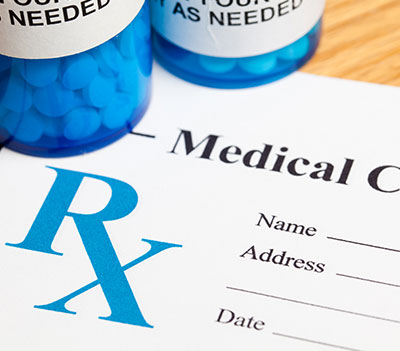Medicare Part D
What is Medicare Part D
Medicare in general is a health insurance system established by the US Government. Its purpose is to aid US citizens in paying the costs of their healthcare.
Medicare is broken up in to 4 categories:
- Medicare Part A
- Medicare Part B
- Medicare Part C
- Medicare Part D
Medicare Part D is Prescription Drug Coverage. Medicare Part D is offered to anyone and everyone who is on Medicare. Medicare Part D is provided by insurance companies approved by Medicare to offer prescription drug coverage. There are 2 ways you can obtain Prescription Drug coverage.
The first way is:
Medicare Prescription Drug Plans
These plans are often referred to as PDP’s or Stand Alone Prescription Drug Plans. PDP’s can be added to Original Medicare, Supplements or Medi Gap Plans and they can also be added to Medicare Advantage Plans that don’t already include Prescription Drug coverage such as Medicare Cost Plans, some Medicare Private Fee-for-Service (PFFS) Plans, and Medicare Medical Savings Account (MSA) Plans.
The second way is:
Medicare Advantage Plans or other Medicare Health Plans
These plans are often referred to as MA-PD Plans. MA-PD plans are plans that cover all of your Medicare Part A, Medicare Part B and Medicare Part D coverage. If you have a Medicare Advantage Plan that has Prescription Drug coverage included you do not need to purchase a separate Prescription Drug Plan.
What is covered under Medicare Part D
In general Medicare Part D covers Prescription Drugs. Medicare PDP’s are required to meet the standard set by the Federal Government for drugs that must be covered including generic and preferred brands. Medicare Prescription Drug Plans are required to cover at least 2 drugs in every therapy category. For a complete list of covered medications you will need to look at each individual formulary you are considering. Medicare Prescription Drug Plans are also required to cover all medicallynecessary commercially-available vaccines, not already covered under Part B.
What is NOT covered under Medicare Part D
Medicare Prescription Drug plans generally cover most drugs that are medically necessary to treat disease. There are medications that are on the market that Medicare does not cover. The following medications are not generally covered under Medicare Part D: (these are a list of general medications and is not an all inclusive list)
- Fertility Drugs
- Cosmetic Drugs
- Hair Growth Medications
- Cough and Cold
- Non Prescription Drugs
- Non FDA approved medications
- DESI Medications (medications that the FDA has determined to be safe, but not effective
How do I qualify for Medicare Part D
There are several different ways you can qualify for Medicare. The most common requirement is if you are a US citizen and you are 65 or older. However, being a US citizen age 65 or older is not the only way you can qualify to receive Medicare benefits. You may also qualify to receive Medicare benefits if you are under the age of 65 if you meet certain requirements. Certain disabilities, permanent kidney failure and other conditions can also make you eligible for Medicare benefits. You can always call your local Social Security administration if you need further assistance with Medicare Eligibility.
In addition to this, in order to enroll in Medicare part D you must also live in the servicing area of the plan you are trying to join.
How much does Medicare Part D cost
The monthly cost for premiums for Medicare Part D coverage varies from company to company. Each company will have its own plan options and premiums. In addition to the monthly premium, if you decide not to join a Medicare Prescription Drug Plan when you’re first eligible, if you don’t have other prescription drug coverage that Medicare deems as credible, or you don’t get Extra Help with your prescriptions through the state or another program, you’ll likely pay a late enrollment penalty. That penalty is 1% of the national average (which for 2020 is $32.74) per month ($.327) times the number of months you were eligible and did not enroll.
Most Medicare Advantage Plans that have Prescription Drug coverage included do not have monthly premiums.
What you can expect to pay for services under Medicare Part D
Each Prescription Drug Plan will vary in cost. There are several things to consider when determining how much a Stand Alone Prescription Drug Plan will cost.
- The first thing is monthly premium.
Based on the plan you choose the monthly premium will vary. Usually the richer the benefits the more the monthly premium will be.
- The second thing to consider is the annual deductable.
Some Stand alone PDP’s make you meet an annual deductable.
- The third thing is co-pays.
Each Prescription Drug Plan will have its own Formulary, in that formulary will be a list of covered Drugs. In addition to the list of drugs each individual company groups their drugs into “tiers”, the higher the tier the higher the co-pay for that drug. Usually generics start in Tier 1and then the drugs go up from there usually to Tier 4 or Tier 5. Tier 5 on a formulary is usually around a 33% coinsurance and are considered Specialty Drugs.
Because the cost of prescriptions can be hard to manage there is an allowance in place that can help reduce the tier that the more expensive drugs are on if they are medically necessary and you qualify. The way this works is, if your drug is on a higher tier and the physician that prescribed thinks you need that drug instead of a similar drug on a lower tier, you or your prescriber can ask your plan for an exception to get a lower copayment. This process is not guaranteed and it is an exception when and if it is approved.



